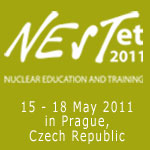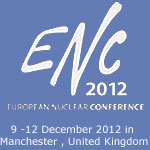
Word from the President

The harrowing pictures of devastation following the earthquake and tsunami that hit the eastern coast of Japan on 11 March were a sobering reminder of the awesome power and unpredictability of nature. Of course, no-one can prevent such catastrophes from occurring, but the resulting serious accident at the Fukushima nuclear power plant highlighted how vital it is to constantly reassert our commitment to upgrading safety levels at nuclear installations. In terms of nuclear safety and security events in Japan have, inevitably, raised the bar even higher. Safety always has been - and will always be - an absolute and non-negotiable priority for the nuclear community. For some of us this may appear to us to be a self-evident truth but, as unfolding events in Japan have shown, it can never be emphasised enough or too often. The nuclear community must do all it can to communicate this reality to the public. It is absolutely vital that the lessons of Fukushima are learned and that we are seen to be doing all we can to ensure that they are.
On 15 March, an extraordinary meeting on the impact of the Fukushima accident was convened by the European Commission (EC). During the meeting EU energy ministers, regulators, experts and industry representatives agreed on the need for special risk and safety assessments (the so-called "stress tests") to be carried out at operational nuclear power plants in Europe. The term “risk and safety assessments” is used in preference to “stress tests,” which has a negative connotation due to its association with the financial crisis of 2007. These assessments must be exhaustive and deliver a clear and objective assessment of the plants’ intrinsic safety levels. At the meeting the EU’s Energy Commissioner, Günther Oettinger, underlined the need for harmonised safety standards to be in place at all of the Community’s 143 nuclear reactors. Different reactor types, their age and technical parameters, as well as the type of emergency cooling systems they have in place, should be among the factors taken in account during the assessment process. In addition, seismicity levels, flood protection systems and procedures in the event of loss of cooling systems or power should also be analysed.
Naturally, the nuclear community was quick to respond and is, as it should be, at the forefront of efforts to ensure that the correct scope and methodology for the risk and safety assessments are agreed upon and then carried out. Here is a chronological run-down of what has happened since 15 March:
On 21 March, ENISS (the European Nuclear Installations Safety Standards) group, whose principal mission is to bring together decision-makers, operators and specialists from the nuclear industry with European regulators in order to identify harmonised safety standards, convened an extraordinary meeting of its Steering Committee. ENISS, NIS (the European Nuclear Energy Forum’s Nuclear Installations Safety Group) are working tirelessly to draw up what they refer to as the “STORE” (Safety Terms of Reference) for the reassessment of Europe’s nuclear power plants.
On 23 March, WENRA (the Western European Nuclear Regulators’ Association) submitted a proposed outline of the risk and safety assessments. WENRA has been working on establishing the scope, methodology and time frame of the assessments. It is also collaborating closely with the European industry at every stage of the process and is awaiting the industry’s feedback on its proposal.
On 24 March, I attended the extraordinary meeting of ENEF’s Risks Working Group, in Brussels, where ENISS presented its Work Programme. During the meeting it was reiterated that harmonised risk and safety assessments must be performed according to a clear and transparent methodology at all of Europe’s nuclear power plants. The process must begin on 1 June and be completed by the end of 2011.
On 12 May, a WENRA task force will present its proposal on the risk and safety assessments to the European Nuclear Safety Regulators’ Group (ENSREG), which is an independent body consisting of representatives of the regulatory authorities in all 27 EU Member States. This proposal will then be presented and further discussed at the European level. The assessments should begin on 1 June and all nuclear power plants in the EU should have been assessed by the end of the year.
The High Scientific Council of ENS, of which I am a member, released a statement on events following Fukushima. That statement is featured in this edition of ENS NEWS and I urge you to read it.
|





